Tuscan ribollita, or ribollita toscana as it’s called in Italian, is a hearty vegetable and white bean soup that has been deeply rooted in the traditions of the Tuscan cucina povera for centuries. It’s naturally vegan, nutritious, and bursting with flavour!
Its origins date back to mediaeval times when peasants used to make it with leftovers like minestrone, vegetables, beans and dry bread from previous meals. It was traditionally made on a Friday or giorno di magra when Italians abstained from eating meat in keeping with their Catholic faith. The vegetables were placed in a pot along with broth and leftover dry bread. It was then boiled up again – hence the name ribollita, which means reboiled.
Today ribollita is indisputably Tuscany’s most famous soup. It’s now well-known beyond the region’s borders and has recently reached international fame. Each household has developed its own unique variation, which family members hand down from generation to generation.

The recipe I’m sharing with you here comes from Maremma, a coastal area that includes much of southwestern Tuscany and part of the neighbouring region of Lazio. We were on holiday there in the summer of 2019, and I managed to sneak a few secrets out with me!
This Tuscan ribollita recipe is as authentic as you’ll find. It contains all the traditional ingredients, and I made it in the same way as they do in Tuscan households.
An authentic Tuscan ribollita recipe
The main ingredients of an authentic ribollita toscana, or Tuscan ribollita, are cannellini beans, cavolo nero, Savoy or other similar cabbage, diced carrots and potatoes, thyme and rosemary. There are many variations, of course, as with all regional dishes.
It’s a straightforward dish to make. It just requires a little time to soak the beans, allow them to cook and then simmer everything together in a big pot. It will take about three and a half hours to make, but it’s absolutely worth the time and effort! The result is a soup that’s among the best I’ve ever tasted – full of goodness, filling and comforting.
If you were looking for something that’s quicker to make, this stregoni bean soup is similar and equally as delicious, thick and hearty, but you can have it ready in less than an hour. Don’t forget to come back to this ribollita recipe when you’ve got more time, though! I promise, you won’t regret it!
Not deterred by the time factor and want an authentic ribollita soup? Great, I’ve got you covered! I recommend you make your ribollita to this recipe the first time. Then, next time, you could get creative and add any leftover vegetables you have on hand. Autumn and winter vegetables are best because ribollita is a dish they serve during the coldest months of the year in Tuscany. It’s also great heated up again the next day, so don’t be afraid to make a big potful – that’s the whole idea of ribollita!

How to make Tuscan ribollita (ribollita toscana)
You can make Tuscan ribollita soup over a period of three days if you want. On the first day, leave the cannellini beans to soak overnight or for up to 24 hours. The following day you can cook the beans and the vegetables. On the third day, you can “reboil” (ribollire) the soup. That way, there’s very little hands-on time involved. Want to do it all in one day? No problem, just follow my step-by-step instructions with photos in the recipe card below. You’ll also find a detailed ingredient list; the quantities indicated are for four to six portions.
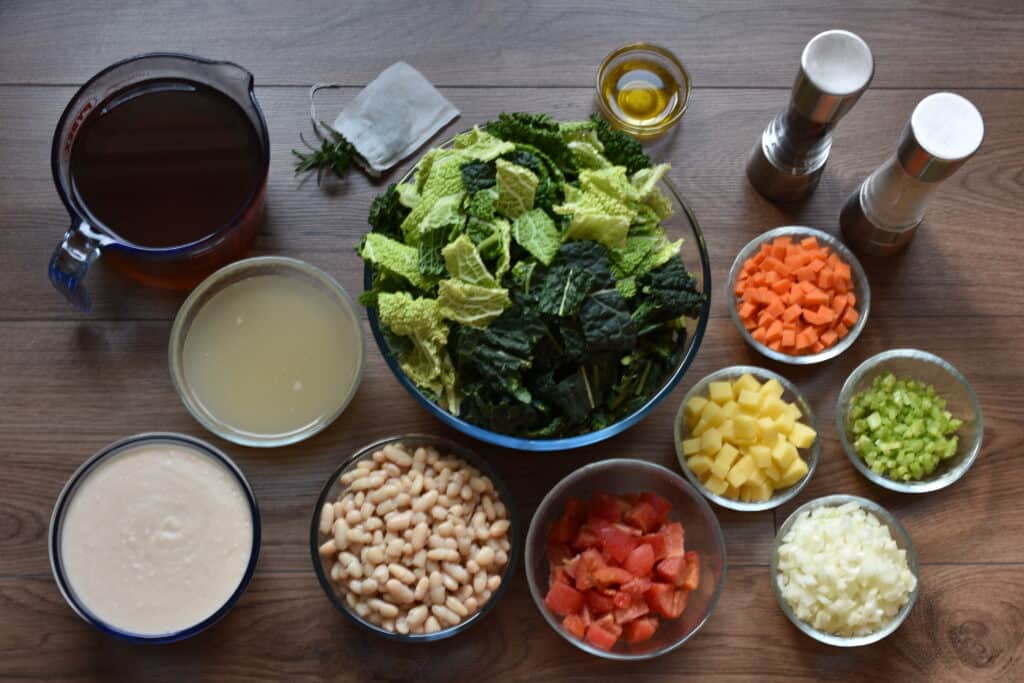
Bread
Stale bread is what makes this dish so unique. When the soup is reboiled (ribollita in Italian), layers of stale bread soak up the delicious vegetable and bean juice. The bread assumes a wonderfully creamy texture when left to stand in the soup and later reboiled. This is the main characteristic of ribollita, so don’t skip it. I slice some of my favourite sourdough bread and leave it out to go stale for a day or two.
Traditionally, Tuscan bread is used in ribollita, as well as other dishes from the region, like pappa al pomodoro and panzanella. Known as pane toscano, sciapo or sciocco in Italian, Tuscan bread is white and contains no salt. The reason for this is unknown, but the most plausible explanation is that salt was either unavailable or too expensive. Outside of the region, it isn’t easy to find Tuscan bread. There are some recipes on the Internet if you want to try making it. Otherwise, you can use white sourdough bread or other bread of your choice. The important thing is that it’s stale.

Cannellini beans
Traditional Tuscan ribollita is made with cannellini beans. I recommend using dried beans for this recipe – it’s really worth the extra time and effort! If you want to use tinned beans, you’ll need two 400 g tins. It’s a pity to use tinned beans for ribollita. If you’re in a hurry, consider putting off making it until you have more time – ribollita is the definition of a slow-food dish! Assuming you’ve decided to go with dried, soak the beans in cold water (no salt) until they are completely rehydrated. It’s best to soak them overnight or for up to 24 hours.

Herbs
Put the fresh herbs in a bag; that way, you’ll have all the flavour without the pieces. They can be very bitter when you bite on them. The only herbs used in ribollita are rosemary and thyme. Use fresh herbs if available. Otherwise, dried will do. If you don’t have a bag or muslin cloth, you could tie them up or put them in loose.

How to cook the cannellini beans
Rinse the beans well and put them in a pan with a bit of salt and enough water to keep them covered during the cooking process. If you are using a regular saucepan, simmer them for about an hour until they are just tender but not falling apart. I cook them for 15 minutes in my Crockpot. I don’t recommend substituting cannellini with other beans, but if you have to, use a similar white bean.
Vegetable broth
It’s very quick and easy to make your own broth with fresh vegetables for this recipe. Just put an onion, a carrot, a stick of celery and a piece of leek in cold water in a separate pan. Bring it to a boil and then simmer with the lid on for an hour or so. Did you know that you can make fantastic vegetable broth using kitchen scraps? Onion skins, carrot peelings, celery leaves and leek trimmings make great broth. You can read more about that in my post on how to make vegetable broth from kitchen scraps. If you want to make broth from cubes or powder, follow the manufacturer’s instructions – you’ll need one litre of vegetable broth for this Tuscan ribollita soup recipe.
What vegetables to use for authentic Tuscan ribollita
Although every Tuscan household has its own version of this traditional recipe, the general consensus is that onions, celery, carrots, potatoes, tomatoes, cavolo nero (aka lacinato kale) and savoy cabbage are the fundamental vegetables without which it wouldn’t be a ribollita.
Choose potatoes that remain firm when cooked. Cavolo nero is an obvious choice because it has always been cultivated in the region. A dark-coloured cabbage will provide a great colour contrast. I once made ribollita with pointed white cabbage (my favourite!) It was delicious, but from the colour point of view, it wasn’t very exciting.

If possible, use fresh ripe tomatoes. It’s best to skin them as the skins don’t break down during cooking the way the pulp does. You can remove the skins quickly and easily by making a slit with a knife in each tomato, plunging them into boiling water, leaving them for a minute or two, and then immersing them in very cold water. The thermal shock will loosen the skins and make them easy to remove.
Savoy cabbage is perfect because you can use both light and dark green leaves.
The vegetables are first sautéed as described in detail in the recipe card below. Then, simmer them on the lowest possible heat for 1 1/2 to 2 hours! Don’t take shortcuts here. Crunchy vegetables are NOT desirable in ribollita!
Adding the beans to the vegetables
Add the beans in two stages, as described in the recipe card below. First, add the blended beans to the vegetables and simmer for 30 minutes. Then, add the whole cannellini beans and simmer the soup for another 30 minutes.

Now, your Tuscan bean soup is ready for the final stage – the reboiling.
Reboiling the soup (ribollire)
Traditionally, the people of Tuscany use an earthenware dish with a lid for the reboiling. Otherwise, you could use a Dutch oven or a pan like the one I used. The important thing is that it has a lid and a thick bottom so that the ribollita won’t stick to the bottom of the pan. The slices of stale bread are arranged in two layers in the pan, alternately with ladles full of soup. A layer of stale bread goes in first, followed by a layer of soup, then more bread, finishing with a layer of soup.

Resting and reheating your Tuscan ribollita
The next step is to leave the ribollita to stand with the lid on for a certain length of time – which can be anything from 3 hours to 24 hours. It’s best to put it in the fridge if you’re going to leave it for longer than 3 hours.
When you are ready to serve it, heat the pan up very slowly on the lowest possible heat and simmer it gently for about 15 minutes. Now you can officially call it ribollita! If necessary, you can add a bit more hot broth – it should have the consistency you can see in the photos.
How to serve Tuscan ribollita soup (ribollita toscana)
You can take the earthenware pot to the table and serve your ribollita in front of your guests or serve it on individual plates before it leaves the kitchen. Either way, a little freshly ground black pepper and a drizzling of extra virgin olive oil provide the perfect finishing touches!

How to store leftover Tuscan ribollita
Store any leftover ribollita in an airtight container in the fridge, where it will keep for a couple of days. Reheat it as described above. I’ve never tried freezing ribollita because I’ve never had any leftovers to freeze! We always gobble it all up within a couple of days, haha! If you try freezing it, let me know how it goes in the comments below.
Frequently asked questions
What is Ribollita?
Ribollita is a traditional Tuscan soup made with stale bread, cannellini beans, and vegetables like cabbage, potatoes, and carrots. Its characteristic long cooking time, thick, hearty consistency and layers of stale bread that soak up all the juices make it really unique among vegetable soups.
How do you make authentic Ribollita?
The authentic preparation involves using stale bread and simmering vegetables, beans, and bread together. Allow the soup to stand for a while to allow the bread to absorb the flavours and thicken the soup.
Can you make Tuscan Ribollita without bread?
While bread is a key ingredient in traditional ribollita, you can leave it out or replace it with gluten-free bread if you wish.
What type of beans are used in Ribollita?
Cannellini beans are a traditional ingredient in ribollita, although you can use other white beans instead if you wish.
Can Ribollita be made ahead of time?
Yes, ribollita often tastes better the next day as the flavours continue to meld and the soup thickens further. In Tuscany, they reheat it and add more broth just before serving.
What vegetables are in Ribollita?
Authentic ribollita includes savoy cabbage or cavolo nero, potatoes, carrots, celery, onions, and tomatoes.
How do you serve Ribollita?
Ribollita is typically served hot with a drizzle of extra virgin olive oil on top and a twist of freshly ground black pepper. It makes a hearty, nutritionally complete meal on its own.

I hope you enjoy this delicious Tuscan ribollita soup recipe, and I’d love to hear from you if you do! Tag me on Instagram or Facebook @vegan_hot_stuff – I love seeing your re-creations! Give it a 5-star rating and leave a comment below – it’s really useful for other readers and helps them find my blog and recipes. I really appreciate your feedback, which ultimately helps me make my recipes more successful. Thanks so much for your support!
While you’re here on Vegan Hot Stuff, you might want to check out some other popular recipes.



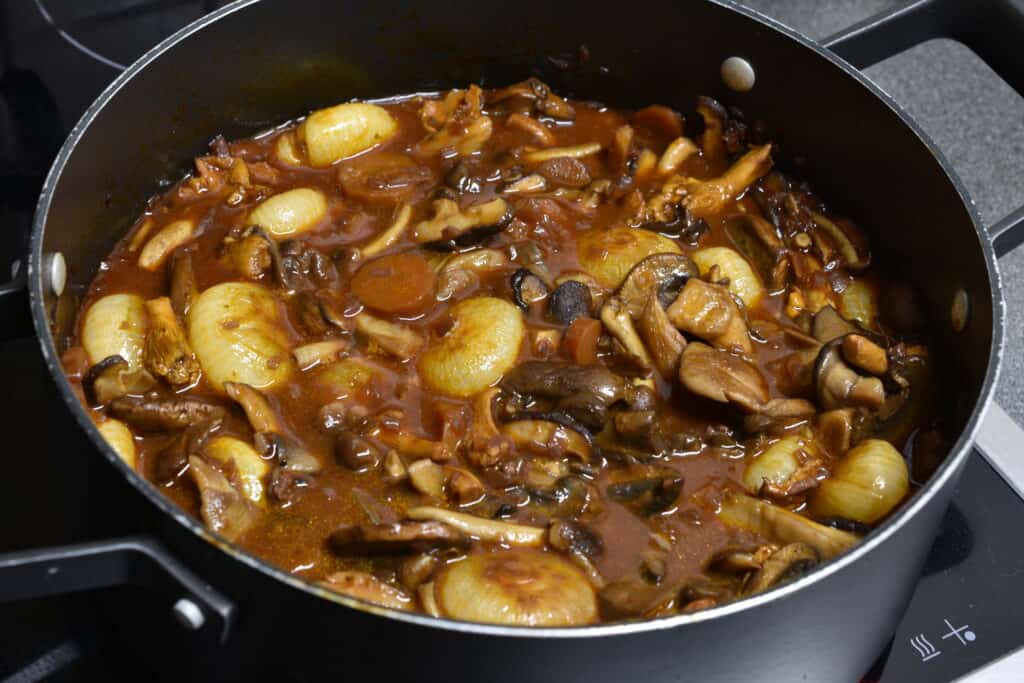

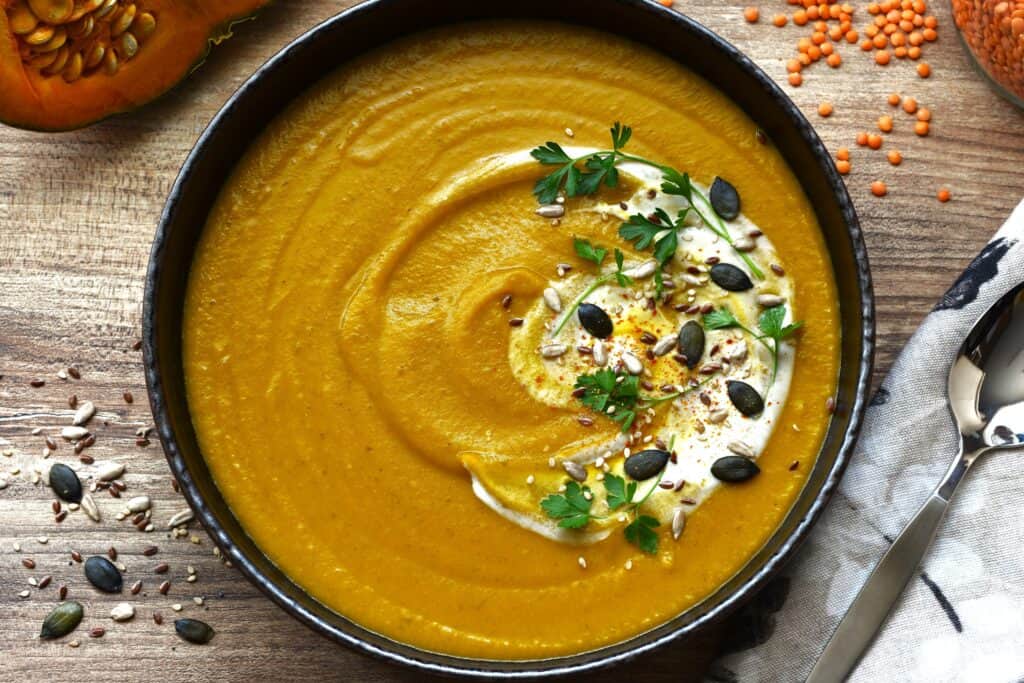
Would you like to receive my recipes as soon as I publish them? Subscribe below!











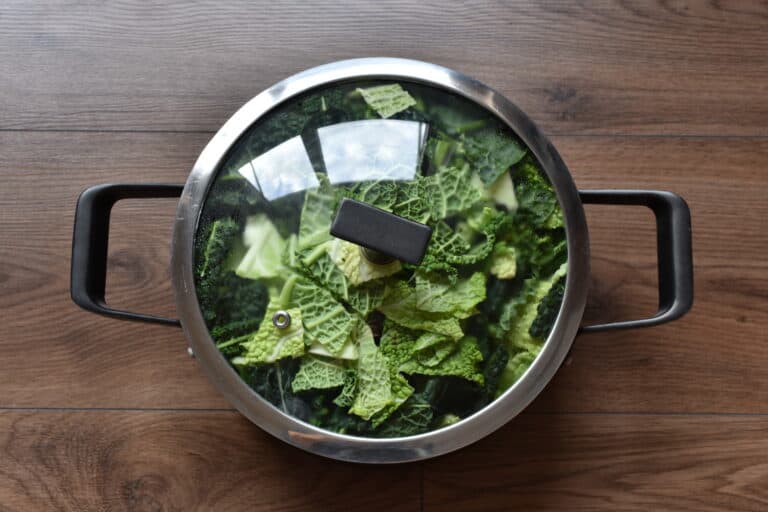


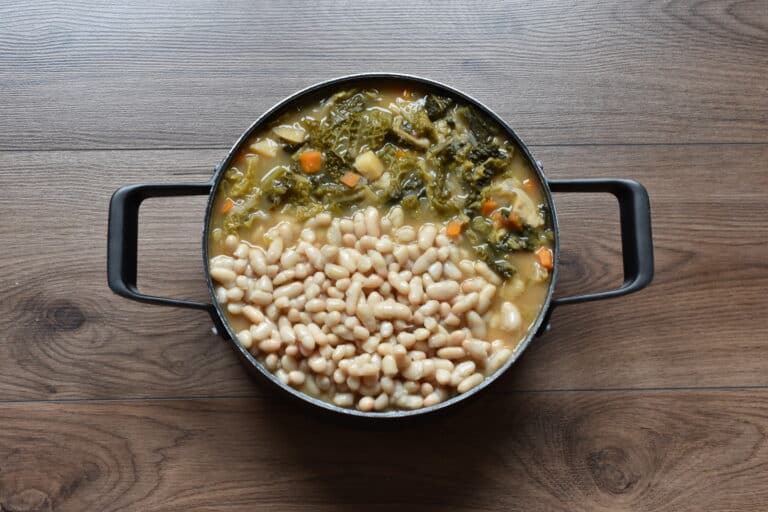






Ottimo piatto!!
Grazie mille per la bella recensione, Guido! L’apprezzo molto e sono contenta che ti sia piaciuta!